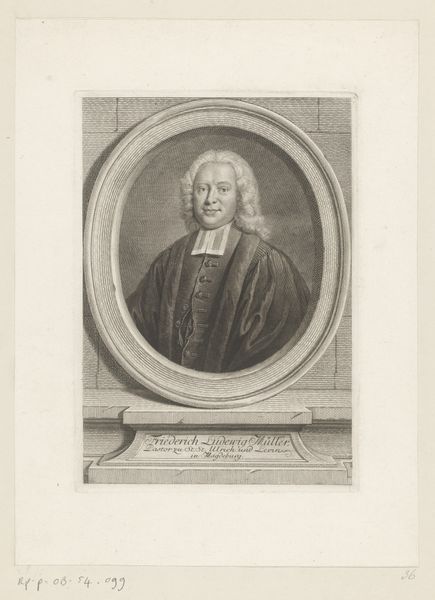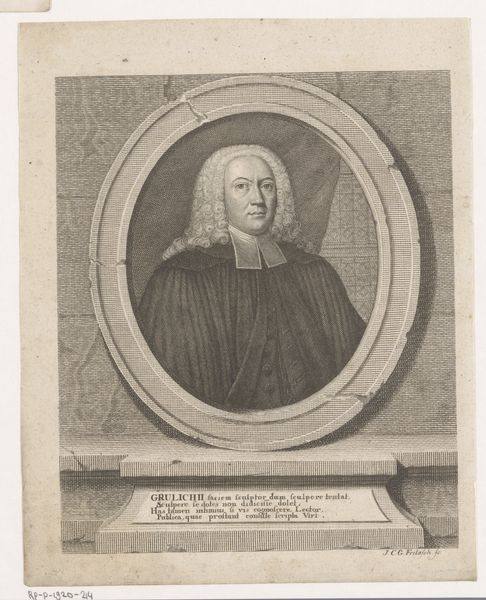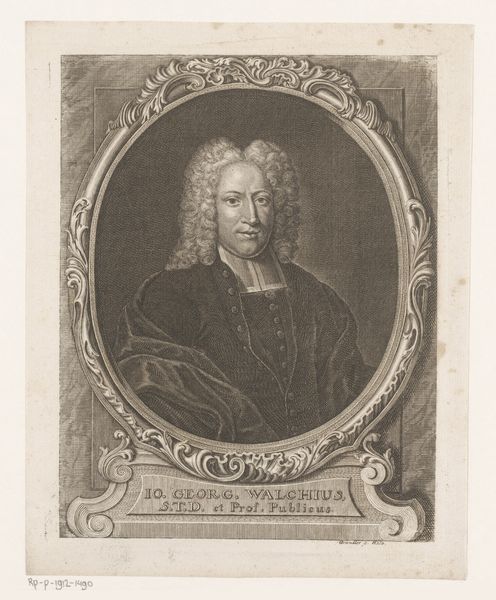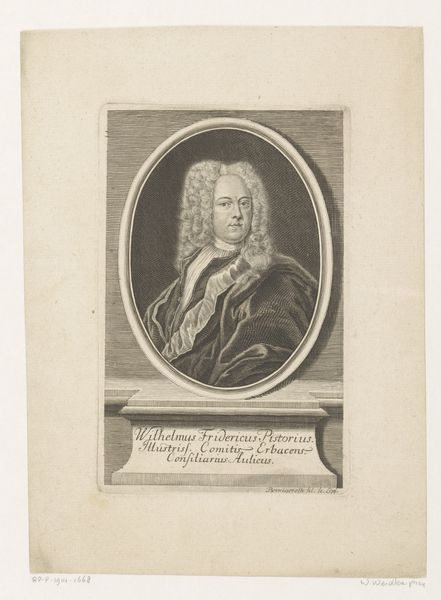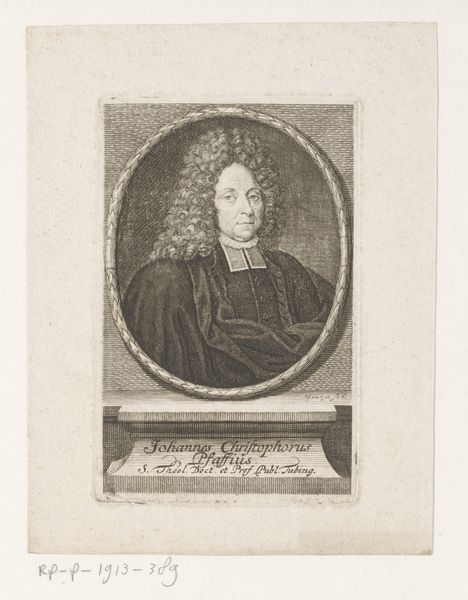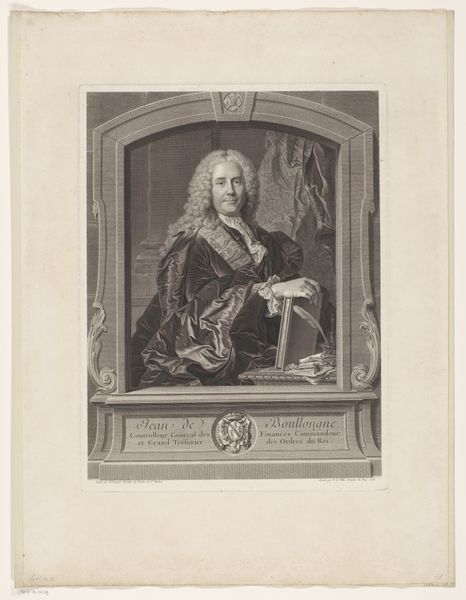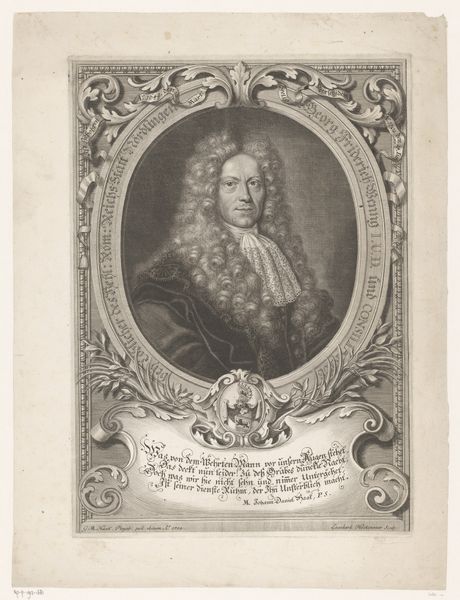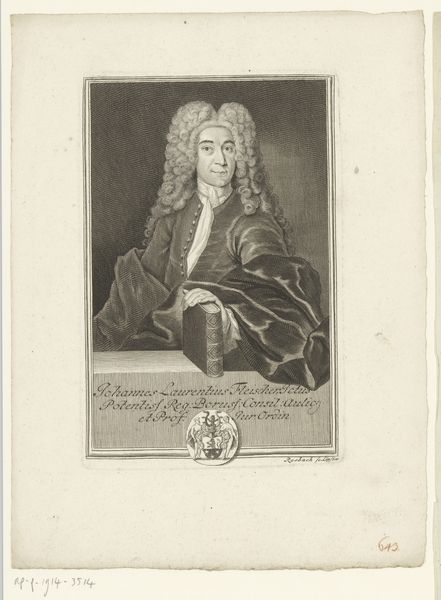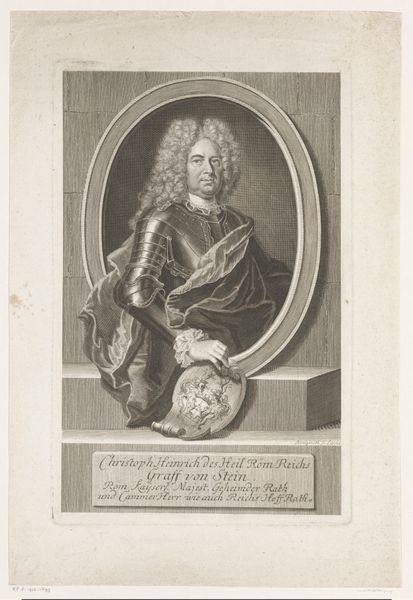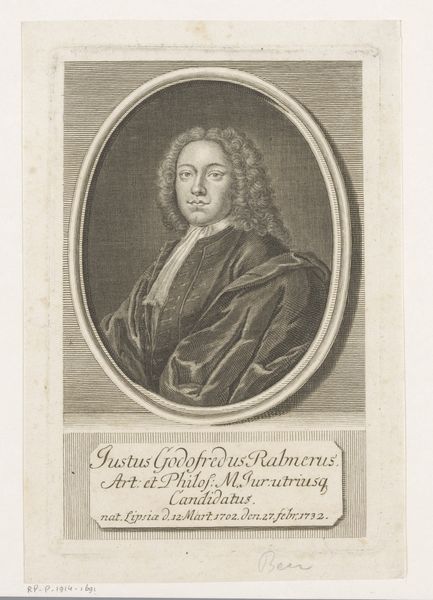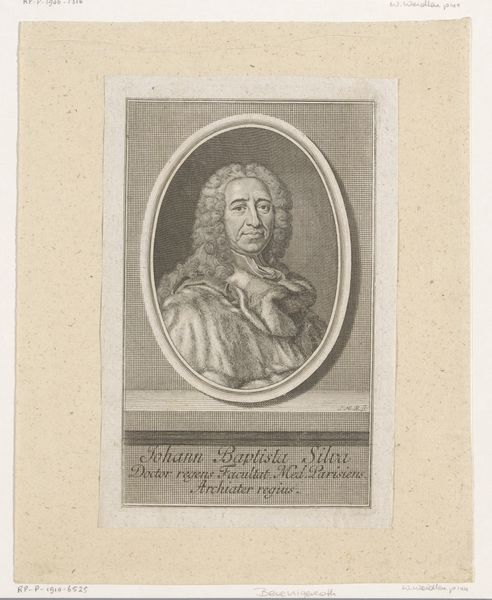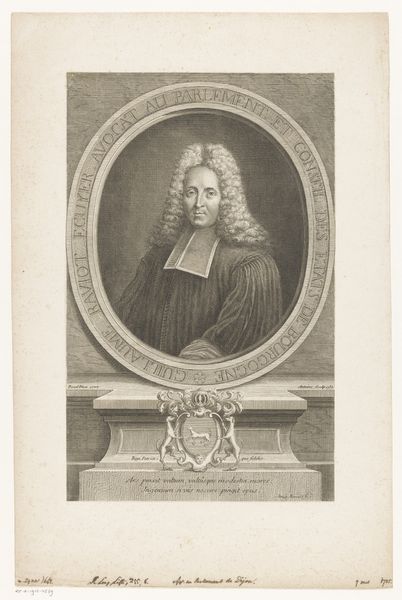
print, engraving
#
portrait
#
baroque
# print
#
engraving
Dimensions: height 163 mm, width 106 mm
Copyright: Rijks Museum: Open Domain
Curator: Before us is "Portret van Johann Jacob Zwierlein," an engraving created around 1735 by Johann Martin Bernigeroth. It's part of the Rijksmuseum's collection. Editor: My first impression is that the work exudes formal reserve. The engraved lines create such a rigid structure, like an official decree captured in monochrome. It makes me wonder about the symbols that lend dignity to his portrait. Curator: Yes, the composition is key here. Notice the careful arrangement of lines, the use of shadow to define form within the oval. It gives a powerful three-dimensionality using just a single plate. The base, the oval frame, and the lettering are very stable structural elements. Editor: Indeed, let's consider the symbols. The elaborate wig, for example, immediately signals status and learning, a marker of the baroque era’s fascination with both reason and elaborate displays of power. This connects him to legal circles, surely. Curator: Absolutely. It reinforces the intellectual tenor we should expect from a piece dedicated to such a figure. Even the texture achieved with the engraved lines is a signal, in itself, of skill, elevating the subject matter through pure craftsmanship. Editor: And what about the lettering beneath the portrait? In bold pronouncements, he's made to be the most Imperial of Advocates, which would seem to align with both personal ambition, as well as the hopes and needs of an expanding Empire. How might Bernigeroth choose to portray such an ideal of empire? Curator: By emphasizing precision. It's all in the rigorous control and distribution of tone through the lines; they describe everything perfectly, from Zwierlein's very sober face to the folds in his clothing, nothing is blurred. Editor: An astute reading! As a visual strategy, you suggest Bernigeroth has consciously elevated one element to meet another—a visual echo between the style of technique and his advocate's aspirations. How wonderfully baroque; what could seem arbitrary at first turns out to be part of the language that makes sense to the artwork overall. Curator: Precisely. When examining images from this period, looking closely at the lines, their qualities, helps us better understand not only the style of that moment but its intellectual aspirations, too. Editor: I’ll think about Zwierlein now as something of an eternal idea of justice from the era, set immaculately as only engraving knows how to fix a thing into permanent visual history.
Comments
No comments
Be the first to comment and join the conversation on the ultimate creative platform.
